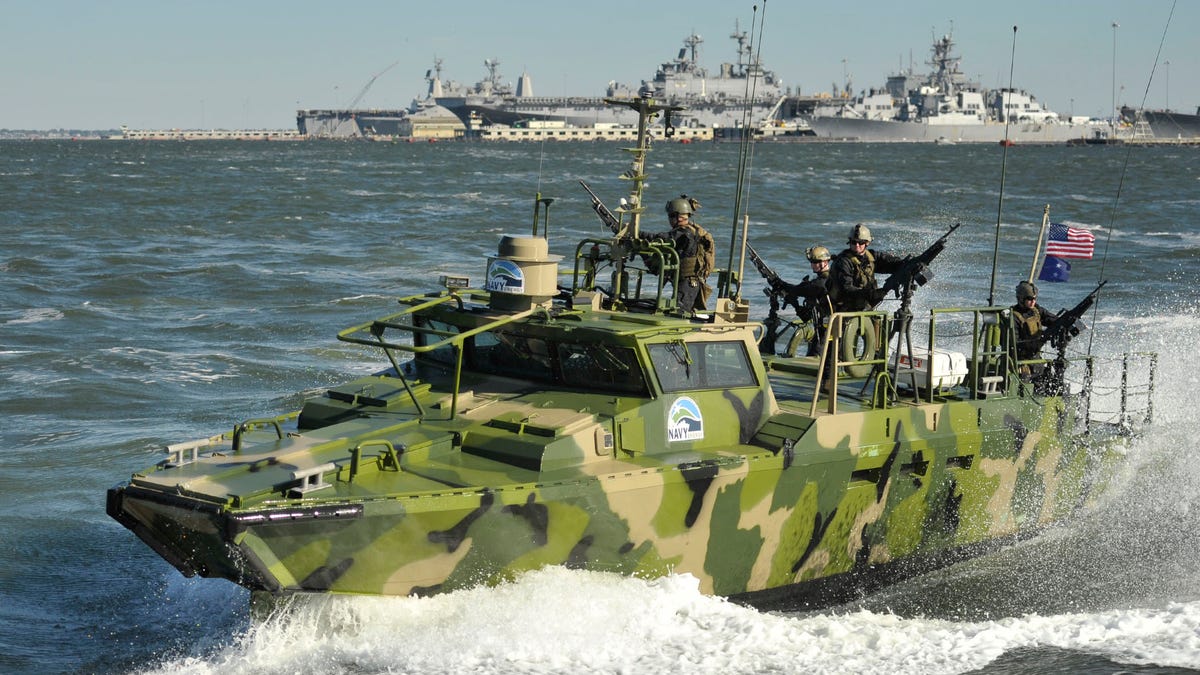Navy: Full steam ahead on Great Green Fleet
Navy's Ray Mabus announces research plan with Department of Energy around grid storage, part of ambitious program to cut fossil fuel use in half this decade at the Navy.

NATIONAL HARBOR, Md.--U.S. Navy Secretary Ray Mabus can measure the cost of transporting oil to combat missions in dollars and in lives.
Mabus gave the keynote talk today at the ARPA-E Summit here, where he announced an agreement between the Department of Defense and the Department of Energy to create energy storage systems geared at providing reliable power and reducing fossil fuel use.
His talk followed speeches by Senator Lamar Alexander of Tennessee and representative Steve Israel of New York, who both highlighted the importance to national security of fossil fuel alternatives.
The Navy has a program, launched in fall 2009 and called the "Great Green Fleet," to convert 50 percent of its energy to fossil fuel alternatives by 2020 and to have half of the Navy's thousands of bases become net energy zero consumers. It's a reference to the "Great White Fleet," the nickname used under President Theodore Roosevelt for a battle fleet which circled the globe almost 100 years ago.
"Every time we make changes to improve the efficiencies of our engines or systems or we use alternative sources of power, we get better and we make people safer," Mabus said.
In the agreement between the Departments of Defense and Energy, the Navy plans to take advantage of grid storage technologies developed in the Advanced Research Projects Agency-Energy (ARPA-E). The cost of the project would be $25 million and start in fiscal year 2012.
The first project will seek to develop hybrid storage systems with higher energy density than what's available in batteries today. Mabus said the technology could lead to mobile storage units for charging military equipment at bases or be used to reduce fuel consumption in vehicles.
The second project will look at using storage for providing reliable power in conjunction with renewable energy systems at Navy buildings. The Navy operates 72,500 buildings across 3.3 million acres of land.
A base in Afghanistan is already using solar panels to partially power its base, which has reduced the amount of diesel fuel it uses for generators. Military personnel are also using solar panels that roll up and fit into their packs, saving foot patrols from carrying 700 pounds of batteries to charge radios and electronics.
In Afghanistan, fuel is the largest cost to operations and a huge logistical challenge that involves delivering the fuel across an ocean and multiple countries, Mabus said. For every $1 per barrel that the price of fuel goes up, the Navy spends $31 million more for fuel. When the price of oil went up $30 per barrel a few years ago, the Navy paid an additional $1 billion to power its aircraft, ships, and ground vehicles.
Beyond those "strategic and economic" arguments for changing to less fossil fuel, Mabus said the military loses lives transporting fuel to bases.
"The single thing we spend the most effort on getting to Afghanistan is fuel," he said. "The Army did a study and found that out of every 24 fuel convoys we use, a soldier or marine is killed or wounded guarding that convoy. That's a high price to pay for fuel."
The need for steady and reliable power are on the rise, too, given the military's growing dependence on digital technologies. In Vietnam, a Marine patrol had two radios, compared with 30 or 50 today.
The Navy is already testing biofuel replacements for its aircraft and other equipment, either made by growing plants and converting them to fuel or through "electrofuels" that use genetically engineered organisms that make fuel from water, carbon dioxide, and another energy source, such as hydrogen or electricity.
The Defense Department's pursuit of fossil fuel alternatives was called into question by a RAND report in January that said alternative fuels for aviation offered "no direct benefit" from a military perspective over fossil fuels.
Mabus didn't address the report specifically but said that all major energy transitions in the history of the Navy were considered too expensive and too risky by military top brass, including the move from sail to coal. He said that the Navy would never allow oil-producing countries in volatile regions to produce its ships and aircraft, but the military does give them a say in whether the Navy's equipment will work.
"Our dependence on fossil fuels creates strategic, operational, and tactical vulnerabilies for our forces and makes them too susceptible to price and supply shocks caused by instability or natural disasters in volatile areas of the world where most of our fossil fuel is produced," he said.

